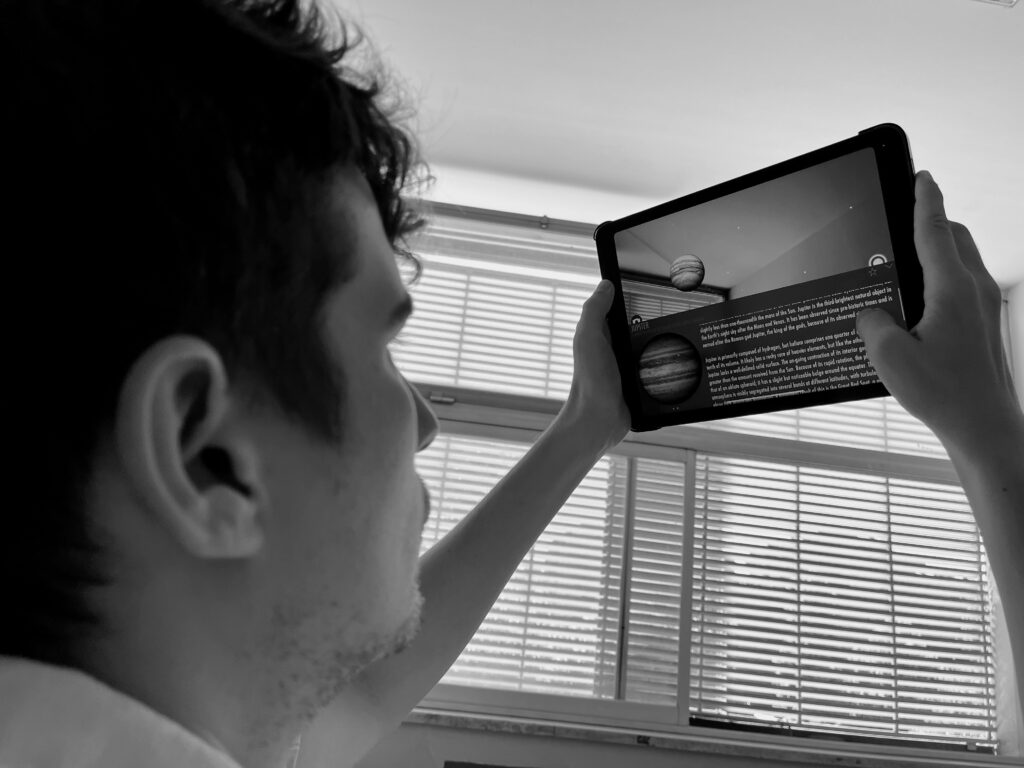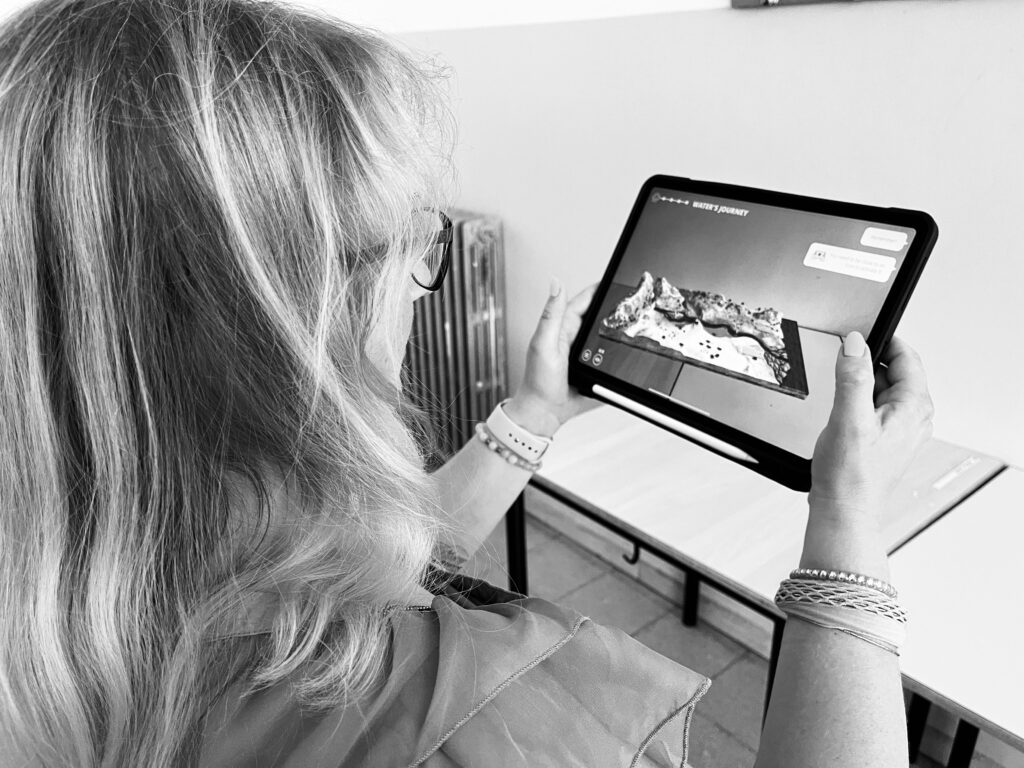What is Augmented Reality?
Augmented Reality or AR for short, is the computer-based extension of reality perception. AR represents an augmentation of reality, this means that a virtual object is projected into the real world and the information can be used there. The virtual objects added to our environment are accurate three-dimensional projections of real objects. In this way, human perception is enriched by the fusion of the real and virtual worlds through devices such as computers, smartphones or tablets.
VR and AR are didactically inseparable.

When to use AR applications?
Augmented reality has several applications:
In medicine, in particular, it has been used to programme, train and perform delicate surgeries. For games, the most famous example is Pokémon Go, which uses GPS technology to locate parks, squares and monuments in which to meet and capture the various characters. In museums, for example, starting from the bones it is possible to see a dinosaur up close in its real size, having the feeling of being able to meet and touch it, making the visit more exciting and interactive.
Didactically, Augmented Reality has innumerable potentialities: students are digital natives and conceive technology as an everyday tool, so AR applications can be used in a variation of learning formats such as lecture,
demonstration – imitation, task-based learning, explorative teaching, open teaching, learning through teaching, free work, project work, station learning, gamification, and reflection.
In terms of learning subject matter, AR can be extremely useful if the reality is inaccessible in the classroom. This can be past times, remote locations, microscopic areas, or the interior of the body or earth.
Why to use AR applications in the classroom?
AR applications support learners‘ affective involvement and enable lasting and immersive learning experiences. As digital resources, they embody the idea of individualized and self-directed learning. This includes giving learners the freedom to follow their own interests, to interact with the virtual setting, to determine their own learning pace, and if possible, to learn independently of location and time. From the teacher’s perspective, self-directed learning takes place as a process of empowerment – they must teach how to learn.
Not only learners benefit directly from the technology, but also teachers. AR applications can take over parts of their work, e.g in the instruction-based field AR applications can take over instructional guidance as assistance systems and they can also assist in correcting. Digital systems can correct without delay and give automated feedback.


Conclusion
The educational potentials of AR applications still need to be further discovered, judging by the diversity of their occurrence. During our workshops, we have not only experienced that some apps turned out to be pedagogically unsuitable, but on the contrary, we have also come across considerable educational potential that the product descriptions would never have led us to expect. Now we are going to present some applications which we consider to be useful in classroom.